Carlosalberthreis - Carlos Alberth Reis

More Posts from Carlosalberthreis and Others
What’s Up for June 2017?
Have a planet party and compare Saturn and Jupiter! We’ll show you where and when to point your telescope or binoculars to see these planets and their largest moons.

Meet at midnight to have a planetary party when Jupiter and Saturn are visible at the same time!

The best time will be after midnight on June 17. To see the best details, you’ll need a telescope.

Saturn will be at opposition on June 14, when Saturn, the Earth and the sun are in a straight line.

Opposition provides the best views of Saturn and several of its brightest moons. At the very least, you should be able to see Saturn’s moon Titan, which is larger and brighter than Earth’s moon.

As mentioned earlier, you’ll be able to see Jupiter and Saturn in the night sky this month. Through a telescope, you’ll be able to see the cloud bands on both planets. Saturn’s cloud bands are fainter than those on Jupiter.

You’ll also have a great view of Saturn’s Cassini Division, discovered by astronomer Giovanni Cassini in 1675, namesake of our Cassini spacecraft.

Our Cassini spacecraft has been orbiting the planet since 2004 and is on a trajectory that will ultimately plunge it into Saturn’s atmosphere on September 15, 2017, bringing the mission to a close.

Our Juno spacecraft recently completed its sixth Jupiter flyby. Using only binoculars you can observe Jupiter’s 4 Galilean moons - Io, Callisto, Ganymede and Europa.

To learn about What’s Up in the skies for June 2017, watch the full video:
For more astronomy events, check out NASA’s Night Sky Network at https://nightsky.jpl.nasa.gov/.
Make sure to follow us on Tumblr for your regular dose of space: http://nasa.tumblr.com

Essa imagem capturada pela Wide Field Camera 3, a WFC3 do Hubble, mostra a galáxia chamada UGC 6093. Como se pode ver facilmente, a UGC 6093 é conhecida como uma galáxia espiral barrada - ela tem belos braços que espiralam a partir de uma barra que corta o centro da galáxia. Ela é classificada como uma galáxia ativa, o que significa que ela abriga um núcleo ativo de galáxia, ou um AGN, uma região compacta no centro da galáxia onde o material está centro dragado em direção do buraco negro supermassivo central. À medida que esse buraco negro devora material, ele emite intensa radiação, fazendo com que a galáxia brilhe intensamente. Mas a UGC 6093 é mais exótica ainda. A galáxia age essencialmente como um gigantesco laser astronômico que espalha sua luz nas microondas, não na luz visível, esse tipo de objeto é chamada de megamaser, sendo maser o termo usado para um laser de microondas. Os megamasers como a UGC 6093, podem ser cerca de 100 milhões de vezes mais brilhantes do que os masers encontrados em galáxias como a Via Láctea. A WFC3 do Hubble, observa a luz sendo espalhada em uma grande variedade de comprimentos de ondas, desde o infravermelho próximo, passando pela parte visível, até o ultravioleta próximo. Ela tem dois canais que detectam e processam os tipos diferentes de luz, permitindo que os astrônomos estudem uma grande quantidade de fenômenos astrofísicos, por exemplo, o canal UV-visível pode estudar galáxias que estão passando pelo processo de formação de estrelas, enquanto que o canal do infravermelho próximo pode estudar a luz desviada para o vermelho de galáxias no universo distante. Essas imagens multi-espectrais feitas pelo Hubble são de suma importância para estudar as galáxias megamasers.
What's That Space Rock?
The path through the solar system is a rocky road. Asteroids, comets, Kuiper Belt Objects—all kinds of small bodies of rock, metal and ice are in constant motion as they orbit the Sun. But what’s the difference between them, anyway? And why do these miniature worlds fascinate space explorers so much? The answer is profound: they may hold the keys to better understanding where we all come from. Here’s 10 things to know about the solar system this week:

This picture of Eros, the first of an asteroid taken from an orbiting spacecraft, came from our NEAR mission in February 2000. Image credit: NASA/JPL
1. Asteroids
Asteroids are rocky, airless worlds that orbit our Sun. They are remnants left over from the formation of our solar system, ranging in size from the length of a car to about as wide as a large city. Asteroids are diverse in composition; some are metallic while others are rich in carbon, giving them a coal-black color. They can be “rubble piles,” loosely held together by their own gravity, or they can be solid rocks.
Most of the asteroids in our solar system reside in a region called the main asteroid belt. This vast, doughnut-shaped ring between the orbits of Mars and Jupiter contains hundreds of thousands of asteroids, maybe millions. But despite what you see in the movies, there is still a great deal of space between each asteroid. With all due respect to C3PO, the odds of flying through the asteroid belt without colliding with one are actually pretty good.
Other asteroids (and comets) follow different orbits, including some that enter Earth’s neighborhood. These are called near-Earth objects, or NEOs. We can actually keep track of the ones we have discovered and predict where they are headed. The Minor Planet Center (MPC) and Jet Propulsion Laboratory’s Center for Near Earth Object Studies (CNEOS) do that very thing. Telescopes around the world and in space are used to spot new asteroids and comets, and the MPC and CNEOS, along with international colleagues, calculate where those asteroids and comets are going and determine whether they might pose any impact threat to Earth.
For scientists, asteroids play the role of time capsules from the early solar system, having been preserved in the vacuum of space for billions of years. What’s more, the main asteroid belt may have been a source of water—and organic compounds critical to life—for the inner planets like Earth.

The nucleus of Comet 67P/Churyumov-Gerasimenko, as seen in January 2015 by the European Space Agency’s Rosetta spacecraft. Image credit: ESA/Rosetta/NAVCAM – CC BY-SA IGO 3.0
2. Comets
Comets also orbit the Sun, but they are more like snowballs than space rocks. Each comet has a center called a nucleus that contains icy chunks of frozen gases, along with bits of rock and dust. When a comet’s orbit brings it close to the Sun, the comet heats up and spews dust and gases, forming a giant, glowing ball called a coma around its nucleus, along with two tails – one made of dust and the other of excited gas (ions). Driven by a constant flow of particles from the Sun called the solar wind, the tails point away from the Sun, sometimes stretching for millions of miles.
While there are likely billions of comets in the solar system, the current confirmed number is 3,535. Like asteroids, comets are leftover material from the formation of our solar system around 4.6 billion years ago, and they preserve secrets from the earliest days of the Sun’s family. Some of Earth’s water and other chemical constituents could have been delivered by comet impacts.

An artist re-creation of a collision in deep space. Image credit: NASA/JPL-Caltech
3. Meteoroids
Meteoroids are fragments and debris in space resulting from collisions among asteroids, comets, moons and planets. They are among the smallest “space rocks.” However, we can actually see them when they streak through our atmosphere in the form of meteors and meteor showers.

This photograph, taken by an astronaut aboard the International Space Station, provides the unusual perspective of looking down on a meteor as it passes through the atmosphere. The image was taken on Aug. 13, 2011, during the Perseid meteor shower that occurs every August. Image credit: NASA
4. Meteors
Meteors are meteoroids that fall through Earth’s atmosphere at extremely high speeds. The pressure and heat they generate as they push through the air causes them to glow and create a streak of light in the sky. Most burn up completely before touching the ground. We often refer to them as “shooting stars.” Meteors may be made mostly of rock, metal or a combination of the two.
Scientists estimate that about 48.5 tons (44,000 kilograms) of meteoritic material falls on Earth each day.

The constellation Orion is framed by two meteors during the Perseid shower on Aug. 12, 2018 in Cedar Breaks National Monument, Utah. Image credit: NASA/Bill Dunford
5. Meteor Showers
Several meteors per hour can usually be seen on any given night. Sometimes the number increases dramatically—these events are termed meteor showers. They occur when Earth passes through trails of particles left by comets. When the particles enter Earth’s atmosphere, they burn up, creating hundreds or even thousands of bright streaks in the sky. We can easily plan when to watch meteor showers because numerous showers happen annually as Earth’s orbit takes it through the same patches of comet debris. This year’s Orionid meteor shower peaks on Oct. 21.

An SUV-sized asteroid, 2008TC#, impacted on Oct. 7, 2008, in the Nubian Desert, Northern Sudan. Dr. Peter Jenniskens, NASA/SETI, joined Muawia Shaddas of the University of Khartoum in leading an expedition on a search for samples. Image credit: NASA/SETI/P. Jenniskens
6. Meteorites
Meteorites are asteroid, comet, moon and planet fragments (meteoroids) that survive the heated journey through Earth’s atmosphere all the way to the ground. Most meteorites found on Earth are pebble to fist size, but some are larger than a building.
Early Earth experienced many large meteorite impacts that caused extensive destruction. Well-documented stories of modern meteorite-caused injury or death are rare. In the first known case of an extraterrestrial object to have injured a human being in the U.S., Ann Hodges of Sylacauga, Alabama, was severely bruised by a 8-pound (3.6-kilogram) stony meteorite that crashed through her roof in November 1954.

The largest object in the asteroid belt is actually a dwarf planet, Ceres. This view comes from our Dawn mission. The color is approximately as it would appear to the eye. Image credit: NASA/JPL-Caltech/UCLA/MPS/DLR/IDA
7. Dwarf Planets
Don’t let the name fool you; despite their small size, dwarf planets are worlds that are just as compelling as their larger siblings. Dwarf planets are defined by astronomers as bodies massive enough to be shaped by gravity into a round or nearly round shape, but they don’t have enough of their own gravitational muscle to clear their path of other objects as they orbit the Sun. In our solar system, dwarf planets are mostly found in the Kuiper Belt beyond Neptune; Pluto is the best-known example. But the largest object in the asteroid belt is the dwarf planet Ceres. Like Pluto, Ceres shows signs of active geology, including ice volcanoes.
8. Kuiper Belt Objects
The Kuiper Belt is a disc-shaped region beyond Neptune that extends from about 30 to 55 astronomical units – that is, 30 to 55 times the distance from the Earth to the Sun. There may be hundreds of thousands of icy bodies and a trillion or more comets in this distant region of our solar system.

An artist’s rendition of the New Horizons spacecraft passing by the Kuiper Belt Object MU69 in January 2019. Image credits: NASA/JHUAPL/SwRI
Besides Pluto, some of the mysterious worlds of the Kuiper Belt include Eris, Sedna, Quaoar, Makemake and Haumea. Like asteroids and comets, Kuiper Belt objects are time capsules, perhaps kept even more pristine in their icy realm.

This chart puts solar system distances in perspective. The scale bar is in astronomical units (AU), with each set distance beyond 1 AU representing 10 times the previous distance. One AU is the distance from the Sun to the Earth, which is about 93 million miles or 150 million kilometers. Neptune, the most distant planet from the Sun, is about 30 AU. Image credit: NASA/JPL-Caltech
9. Oort Cloud Objects
The Oort Cloud is a group of icy bodies beginning roughly 186 billion miles (300 billion kilometers) away from the Sun. While the planets of our solar system orbit in a flat plane, the Oort Cloud is believed to be a giant spherical shell surrounding the Sun, planets and Kuiper Belt Objects. It is like a big, thick bubble around our solar system. The Oort Cloud’s icy bodies can be as large as mountains, and sometimes larger.
This dark, cold expanse is by far the solar system’s largest and most distant region. It extends all the way to about 100,000 AU (100,000 times the distance between Earth and the Sun) – a good portion of the way to the next star system. Comets from the Oort Cloud can have orbital periods of thousands or even millions of years. Consider this: At its current speed of about a million miles a day, our Voyager 1 spacecraft won’t reach the Oort Cloud for more than 300 years. It will then take about 30,000 years for the spacecraft to traverse the Oort Cloud, and exit our solar system entirely.

This animation shows our OSIRIS-REx spacecraft collecting a sample of the asteroid Bennu, which it is expected to do in 2020. Image credit: NASA/Goddard Space Flight Center
10. The Explorers
Fortunately, even though the Oort Cloud is extremely distant, most of the small bodies we’ve been discussing are more within reach. In fact, NASA and other space agencies have a whole flotilla of robotic spacecraft that are exploring these small worlds up close. Our mechanical emissaries act as our eyes and hands in deep space, searching for whatever clues these time capsules hold.
A partial roster of our current or recent missions to small, rocky destinations includes:
OSIRIS-REx – Now approaching the asteroid Bennu, where it will retrieve a sample in 2020 and return it to the Earth for close scrutiny.
New Horizons – Set to fly close to MU69 or “Ultima Thule,” an object a billion miles past Pluto in the Kuiper Belt on Jan. 1, 2019. When it does, MU69 will become the most distant object humans have ever seen up close.
Psyche – Planned for launch in 2022, the spacecraft will explore a metallic asteroid of the same name, which may be the ejected core of a baby planet that was destroyed long ago.
Lucy – Slated to investigate two separate groups of asteroids, called Trojans, that share the orbit of Jupiter – one group orbits ahead of the planet, while the other orbits behind. Lucy is planned to launch in 2021.
Dawn – Finishing up a successful seven-year mission orbiting planet-like worlds Ceres and Vesta in the asteroid belt.
Plus these missions from other space agencies:
The Japan Aerospace Exploration Agency (JAXA)’s Hayabusa2– Just landed a series of small probes on the surface of the asteroid Ryugu.
The European Space Agency (ESA)’s Rosetta – Orbited the comet 67P/Churyumov-Gerasimenko and dispatched a lander to its surface.
Make sure to follow us on Tumblr for your regular dose of space: http://nasa.tumblr.com.

Foto da minha graduação em Física na Universidade do Estado do Amazonas (UEA) que ocorreu no dia 25 de agosto de 2016. (em Parintins)

Belo arco circunzenital fotografado em 26 de Junho de 2016 no Texas. By www.eluniversohoy.net
Are we alone in the universe?
There’s never been a better time to ponder this age-old question. We now know of thousands of exoplanets – planets that orbit stars elsewhere in the universe.

So just how many of these planets could support life?
Scientists from a variety of fields — including astrophysics, Earth science, heliophysics and planetary science — are working on this question. Here are a few of the strategies they’re using to learn more about the habitability of exoplanets.
Squinting at Earth
Even our best telescopic images of exoplanets are still only a few pixels in size. Just how much information can we extract from such limited data? That’s what Earth scientists have been trying to figure out.
One group of scientists has been taking high-resolution images of Earth from our Earth Polychromatic Imaging Camera and ‘degrading’ them in order to match the resolution of our pixelated exoplanet images. From there, they set about a grand process of reverse-engineering: They try to extract as much accurate information as they can from what seems — at first glance — to be a fairly uninformative image.

Credits: NOAA/NASA/DSCOVR
So far, by looking at how Earth’s brightness changes when land versus water is in view, scientists have been able to reverse-engineer Earth’s albedo (the proportion of solar radiation it reflects), its obliquity (the tilt of its axis relative to its orbital plane), its rate of rotation, and even differences between the seasons. All of these factors could potentially influence a planet’s ability to support life.
Avoiding the “Venus Zone”
In life as in science, even bad examples can be instructive. When it comes to habitability, Venus is a bad example indeed: With an average surface temperature of 850 degrees Fahrenheit, an atmosphere filled with sulfuric acid, and surface pressure 90 times stronger than Earth’s, Venus is far from friendly to life as we know it.

The surface of Venus, imaged by Soviet spacecraft Venera 13 in March 1982
Since Earth and Venus are so close in size and yet so different in habitability, scientists are studying the signatures that distinguish Earth from Venus as a tool for differentiating habitable planets from their unfriendly look-alikes.
Using data from our Kepler Space Telescope, scientists are working to define the “Venus Zone,” an area where planetary insolation – the amount of light a given planet receives from its host star – plays a key role in atmospheric erosion and greenhouse gas cycles.

Planets that appear similar to Earth, but are in the Venus Zone of their star, are, we think, unlikely to be able to support life.
Modeling Star-Planet Interactions
When you don’t know one variable in an equation, it can help to plug in a reasonable guess and see how things work out. Scientists used this process to study Proxima b, our closest exoplanet neighbor. We don’t yet know whether Proxima b, which orbits the red dwarf star Proxima Centauri four light-years away, has an atmosphere or a magnetic field like Earth’s. However, we can estimate what would happen if it did.
The scientists started by calculating the radiation emitted by Proxima Centauri based on observations from our Chandra X-ray Observatory. Given that amount of radiation, they estimated how much atmosphere Proxima b would be likely to lose due to ionospheric escape — a process in which the constant outpouring of charged stellar material strips away atmospheric gases.

With the extreme conditions likely to exist at Proxima b, the planet could lose the equivalent of Earth’s entire atmosphere in 100 million years — just a fraction of Proxima b’s 4-billion-year lifetime. Even in the best-case scenario, that much atmospheric mass escapes over 2 billion years. In other words, even if Proxima b did at one point have an atmosphere like Earth, it would likely be long gone by now.
Imagining Mars with a Different Star
We think Mars was once habitable, supporting water and an atmosphere like Earth’s. But over time, it gradually lost its atmosphere – in part because Mars, unlike Earth, doesn’t have a protective magnetic field, so Mars is exposed to much harsher radiation from the Sun’s solar wind.

But as another rocky planet at the edge of our solar system’s habitable zone, Mars provides a useful model for a potentially habitable planet. Data from our Mars Atmosphere and Volatile Evolution, or MAVEN, mission is helping scientists answer the question: How would Mars have evolved if it were orbiting a different kind of star?
Scientists used computer simulations with data from MAVEN to model a Mars-like planet orbiting a hypothetical M-type red dwarf star. The habitable zone of such a star is much closer than the one around our Sun.

Being in the habitable zone that much closer to a star has repercussions. In this imaginary situation, the planet would receive about 5 to 10 times more ultraviolet radiation than the real Mars does, speeding up atmospheric escape to much higher rates and shortening the habitable period for the planet by a factor of about 5 to 20.
These results make clear just how delicate a balance needs to exist for life to flourish. But each of these methods provides a valuable new tool in the multi-faceted search for exoplanet life. Armed with these tools, and bringing to bear a diversity of scientific perspectives, we are better positioned than ever to ask: are we alone?
Make sure to follow us on Tumblr for your regular dose of space: http://nasa.tumblr.com.
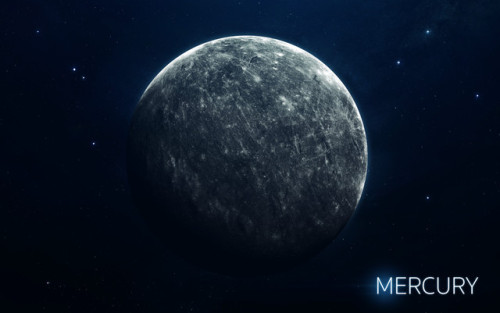
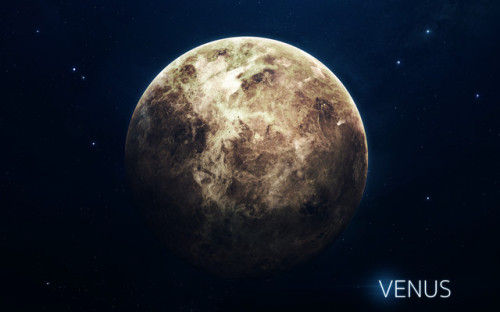
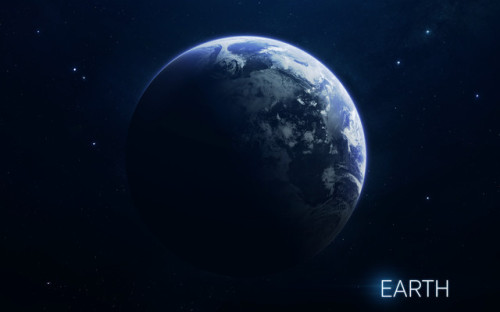
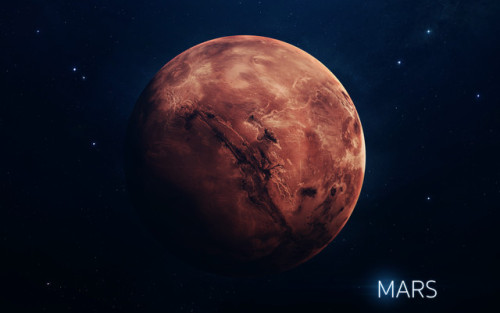
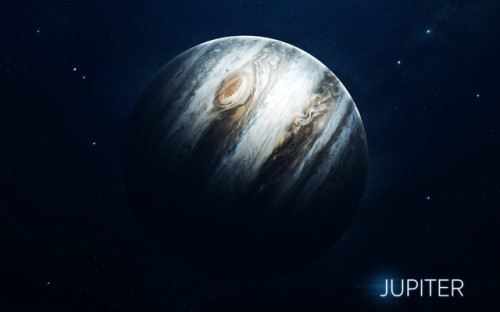
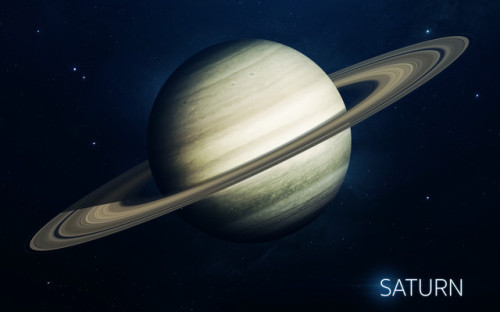
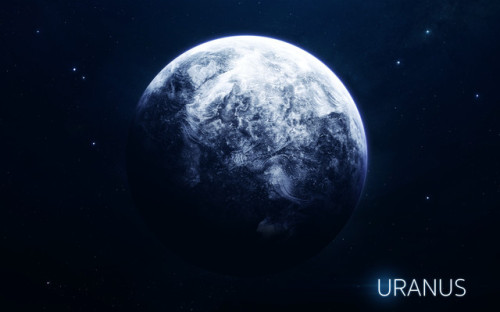
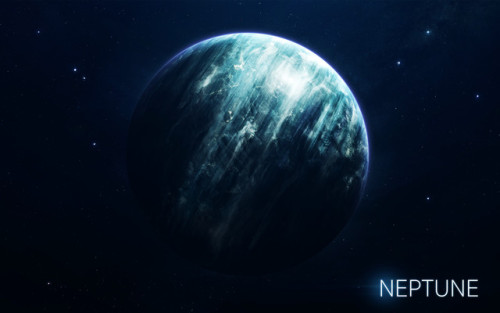
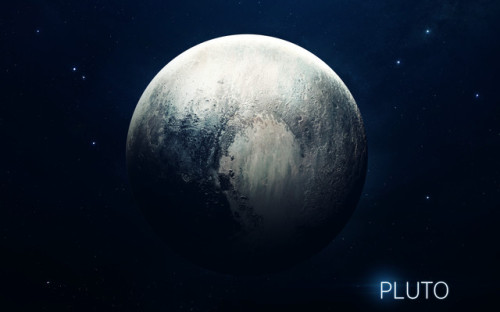
Berries - Vadim Sadovski

Pequena galeria com imagens de colisão/fusão de galáxias, feitas pelo Telescópio Espacial Hubble.
Dia 6 de Julho de 2016, três novos tripulantes serão lançados rumo a Estação Espacial Internacional para cumprir o turno das Expedições 48 e 49.
Os tripulantes são, a astronauta da NASA Kate Rubins, o cosmonauta da ROSCOSMOS, Anatoly Ivanishin e o astronauta da JAXA Takuya Onishi.
O lançamento acontecerá no dia 6 de Julho de 2016, às 22:36 hora de Brasília, direto do Cosmódromo de Baikonur no Cazaquistão.
Os três passarão aproximadamente 4 meses no espaço, e devem retornar para a Terra em Outubro de 2016.
Os tripulantes irão viajar numa nave Soyuz inteiramente nova, um modelo atualizado das antigas Soyuz, e devido a isso, irão cumprir 34 órbitas ao redor da Terra, durante dois dias, antes de se acoplarem à ISS, acoplagem essa que está programada para acontecer no Sábado, dia 9 de Julho de 2016, às 01:12, hora de Brasília.
As escotilhas serão abertas às 3:50 do Sábado, dia 9 de Julho, hora de Brasília, quando os recém chegados serão saudados pelo comandante da Expedição 48, o astronauta Jeff Willims da NASA e pelos Engenheiros de Voo da ROSCOSMOS, Oleg Skripochka e Alexey Ovchnin.
Os seis tripulantes da ISS darão continuidade as centenas de experimentos em biologia, biotecnologia, ciências físicas e ciências da Terra, que estão atualmente em curso dentro do módulo orbital.
No dia 3 de Julho de 2016, a nave Soyuz MS-01 foi montada no topo do foguete, e no dia 4 de Julho de 2016, todo o conjunto foi levado até a base de lançamento para os preparativos finais antes do lançamento.
Foquem ligados no canal e nas redes sociais do Space Today para acompanhar como será o lançamento dessa nova nave Soyuz.
(via https://www.youtube.com/watch?v=uHpMeJ9TBTc)

Essa sequência de mapas mostra a variação na temperatura da superfície da lua Titã de Saturno, num intervalo de dois anos, de 2004 a 2006. As medidas foram feitas com o instrumento Composite Infrared Spectrometer (CIRS) da sonda Cassini da NASA.
Os mapas mostram a radiação térmica infravermelha, o calor, vindo da superfície de Titã, no comprimento de onda de 19 mícron, uma janela espectral onde a atmosfera opaca da lua é na sua maior parte transparente. As temperaturas têm sido calculadas como a média para todo o globo de leste para oeste, para enfatizar as varrições sazonais na latitude. Regiões em preto nos mapas são áreas onde não se obteve dados.
As temperaturas na superfície de Titã mudam vagarosamente no decorrer das longas estações, que duram cerca de sete anos e meio. Como na Terra, a quantidade de luz do Sol recebida em qualquer latitude varia à medida que a iluminação do Sol se move para o norte ou para o sul no decorrer do ano de Saturno que dura 30 anos.
Quando a Cassini chegou em Saturno em 2004, o hemisfério sul de Titã estava no meio do verão e então era a região mais quente. Pouco depois do equinócio de 2009, em 2010, as temperaturas eram simétricas nos hemisférios norte e sul, reproduzindo o que a sonda Voyager 1 em 1980 (1 ano de Titã antes). As temperaturas na sequência esfriaram no sul e subiram no norte, à medida que o inverno no sul se aproximava.
Enquanto que a tendência geral de variação de temperatura é claramente evidente nesses mapas, existe uma faixa estreita em alguns lugares que é um artefato das observações feitas através da atmosfera de Titã. O denso envelope de névoa adiciona um ruído e torna as medidas difíceis.
A animação mostrada abaixo mostra um modelo simplificado da variação da temperatura durante os anos. As faixas de latitude têm sido suavizadas para mostrar mais claramente como a temperatura de pico de Titã se move de 19 graus sul para 16 graus norte entre 2004 e 2016. O pequeno globo na parte superior direita mostra uma visão de Titã como visto da direção do Sol. A latitude em Titã quando o Sol está a pino, é indicado pela estrela amarela.
Embora se mova em latitude, a medida máxima de temperatura em Titã permanece ao redor de -179.6 graus Celsius, com uma temperatura mínima no polo somente 6 graus mais baixa. Esse é um contraste muito menor do que o existente, por exemplo, na Terra onde as temperaturas variam de mais de 100 graus Celsius entre a mais fria e a mais quente.
Esses mapas de temperatura da superfície de Titã são visualizações das medidas que foram publicadas na revista Astrophysical Journal Letters.
Fonte:
http://astronomynow.com/2016/02/23/taking-titans-temperature-2004-2016/
2GP�R�"zV'8
-
 thegreatlandone liked this · 1 year ago
thegreatlandone liked this · 1 year ago -
 all-a-arte liked this · 4 years ago
all-a-arte liked this · 4 years ago -
 g02tube liked this · 8 years ago
g02tube liked this · 8 years ago -
 set-saiil reblogged this · 8 years ago
set-saiil reblogged this · 8 years ago -
 set-saiil liked this · 8 years ago
set-saiil liked this · 8 years ago -
 martynbc-blog liked this · 8 years ago
martynbc-blog liked this · 8 years ago -
 toosmallortootall liked this · 8 years ago
toosmallortootall liked this · 8 years ago -
 chancesoffalling reblogged this · 8 years ago
chancesoffalling reblogged this · 8 years ago -
 isaactheastronaut reblogged this · 8 years ago
isaactheastronaut reblogged this · 8 years ago -
 vulpes-aestatis reblogged this · 8 years ago
vulpes-aestatis reblogged this · 8 years ago -
 cyclic-origin reblogged this · 8 years ago
cyclic-origin reblogged this · 8 years ago -
 rorqualmaru reblogged this · 8 years ago
rorqualmaru reblogged this · 8 years ago -
 sirged7 liked this · 8 years ago
sirged7 liked this · 8 years ago -
 crazyplantkatie reblogged this · 8 years ago
crazyplantkatie reblogged this · 8 years ago -
 crazyplantkatie liked this · 8 years ago
crazyplantkatie liked this · 8 years ago -
 lboogie272 liked this · 8 years ago
lboogie272 liked this · 8 years ago -
 the-glasses-are-my-disguise reblogged this · 8 years ago
the-glasses-are-my-disguise reblogged this · 8 years ago -
 understandabletangerine reblogged this · 8 years ago
understandabletangerine reblogged this · 8 years ago -
 sandraazul-blog liked this · 8 years ago
sandraazul-blog liked this · 8 years ago -
 paladinofthelantern reblogged this · 8 years ago
paladinofthelantern reblogged this · 8 years ago -
 paladinofthelantern liked this · 8 years ago
paladinofthelantern liked this · 8 years ago -
 dunyadansupheliyim reblogged this · 8 years ago
dunyadansupheliyim reblogged this · 8 years ago -
 dunyadansupheliyim liked this · 8 years ago
dunyadansupheliyim liked this · 8 years ago -
 jcchocho liked this · 8 years ago
jcchocho liked this · 8 years ago -
 green-martian-blog liked this · 8 years ago
green-martian-blog liked this · 8 years ago -
 bambinamia-blog liked this · 8 years ago
bambinamia-blog liked this · 8 years ago -
 ribostiglio liked this · 8 years ago
ribostiglio liked this · 8 years ago -
 adambernas liked this · 8 years ago
adambernas liked this · 8 years ago -
 llaomedeia-blog liked this · 8 years ago
llaomedeia-blog liked this · 8 years ago -
 marchofthelonely liked this · 8 years ago
marchofthelonely liked this · 8 years ago -
 alternihilist reblogged this · 8 years ago
alternihilist reblogged this · 8 years ago -
 heavyengineering reblogged this · 8 years ago
heavyengineering reblogged this · 8 years ago -
 asm9 liked this · 8 years ago
asm9 liked this · 8 years ago -
 dyyor-art liked this · 8 years ago
dyyor-art liked this · 8 years ago
